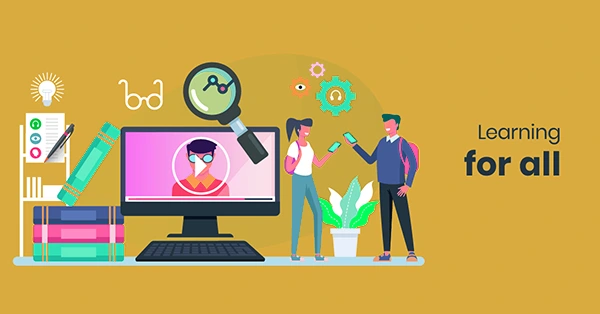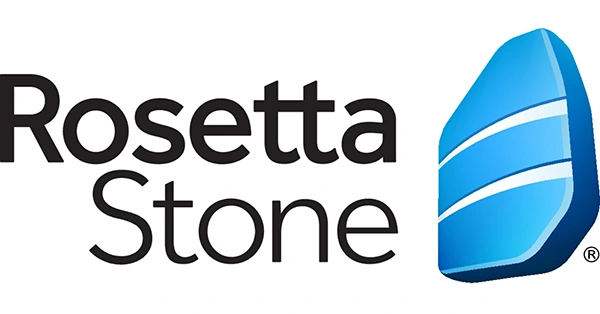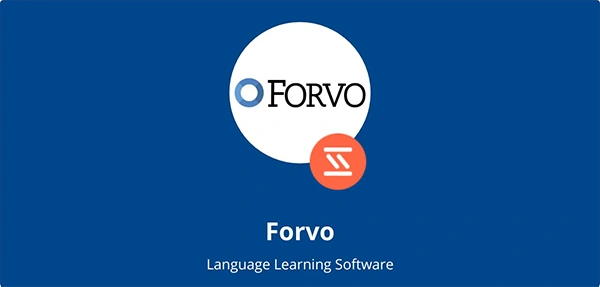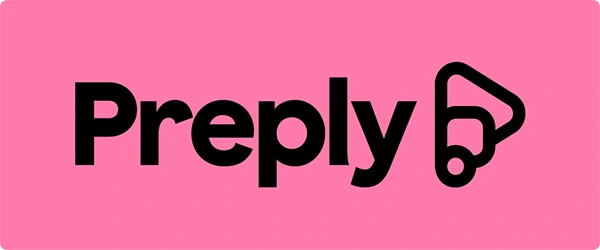- Traditional Approaches to Language Learning Methods: Building Blocks for Proficiency
- The Rise of E-Learning in Language Education
- Creating a Synergistic Learning Environment
- The Role of Technology in Language Pronunciation
- Language Learning Apps Transform Self-Study
- Tips for Effective Language Learning in the Digital Age
- Conclusion

As the waves of technological advancements are ongoing, the institutional industries are making waves as well, which is enabling people to learn languages.
New technologies and more knowledge about effective teaching methods are causing these shifts. This transition involves merging conventional linguistic instruction with modern e-learning methods.
This is also an economically friendly method to learn a new language without any limitations. Also, the availability of unlimited sources provides an in-depth insight into them with just a few clicks, unlike the traditional systems.
So, through the detailed analysis, let us examine how this collaboration is influencing the trajectory of linguistic education.
Traditional Approaches to Language Learning Methods: Building Blocks for Proficiency

For centuries, traditional methods have been the foundation of language education.
These classroom-based approaches emphasize students engaging directly with teachers.
Textbook activities and conversational practice add-on. Lessons are structured clearly. They cover grammar rules, vocabulary practice, and pronunciation drills.
The focus is on organized learning together and understanding basics.
Advantages of Traditional Approaches

Traditional methods excel at offering structured, systematic learning. They provide a clear progression through linguistic communication levels, ensuring a comprehensive understanding of grammar, syntax, and vocabulary.
This structured approach, particularly in a classroom setting, fosters a sense of community and collaborative learning, which is essential for practicing conversational skills and to learn English, or any other language faster and in a more familiar setting.
Did You Know?
The unclassified Busuu language is spoken in the Southern Bantoid of Cameroon – but only by eight people!
The Rise of E-Learning in Language Education

The way people gain linguistic knowledge has been transformed by digital resources.
From online classes to phone apps, e-learning technology now allows learning anywhere. Students can join virtual classrooms, take interactive lessons, and practice conversation online.
Digital tools provide engaging new ways to pick up vocabulary, grammar, and pronunciation. While traditional classroom methods still have value, e-learning removes barriers of time and place.
Students can fit study around their lives and learn at their own pace. The digital era has opened up language education like never before.
Digital Learning Accessibility and Flexibility

A major benefit of online linguistic communication learning is convenience, as the lessons are accessible to Students whenever and wherever (from anywhere in the world).
This flexibility is ideal for busy schedules by allowing personalized learning, with students controlling the pace and can revisit tough concepts, focus on their needs and interests, and design their path.
With 24/7 availability, online resources fit learning into life’s demands. The ability to study from home, a café, or on the go makes linguistic education more accessible.
This freedom and flexibility empower self-driven learning.
Combining Traditional and E-Learning Approaches

The most effective linguistic learning utilizes both traditional and online methods, i.e., blending classroom teaching with digital tools creates a robust experience by bringing the best of worlds: Books and Tech Tools.
Traditional conversational practice remains essential for fluency. The human touch of teachers guides learning, while online flexibility enables practice anytime.
Integrating cutting-edge technology with time-tested techniques paves an optimal path for mastering a new language.
Creating a Synergistic Learning Environment

Blending traditional and online learning creates synergies. Classroom lessons come alive with digital features.
For instance, discussions can carry on in virtual forums. Students keep conversing and building writing skills.
E-learning modules can kick off new topics. Teachers then solidify them in class through activities and feedback. This combination leverages both models’ strengths.
Fun Fact!
In 2020, the global mobile e-learning market was estimated to amount to approximately 1.84 billion U.S. dollars!
Online elements engage with multimedia. The classroom offers peer interactions and teacher guidance. Together they produce robust, well-rounded language instruction.
Digital components introduce material in new ways. Teachers then reinforce it with an interactive human touch. This integrated approach fires on all cylinders for maximum learning.
The Role of Technology in Language Pronunciation

One significant aspect of language learning is pronunciation.
All these rules on how to pronounce words in different languages correctly can be particularly challenging for learners, making it hard to master the pronunciations.
Now, learners can hear how their speaking sounds right away, which helps to improve vocalization through practice.
Technology enables self-correction at the moment. Students can fine-tune verbal skills through immediate input. Digital aids provide personalized guidance for better speech.
Learners can replay audio, model native speakers, and track progress. Interactive platforms promote proficiency through innovative speech practice.
Interactive Pronunciation Tools
Mobile apps and online platforms now use speech recognition to help learners master the vocalization of a particular language through instant feedback and tips.
This makes apps ideal for practice anytime, anywhere, and even without regular access, fluent speakers can still get guidance.
It empowers learners to speak clearly through regular use. Speech recognition takes the guesswork out of perfecting pronunciation.
The List of Tools:
- Google Speech Recognition:

Integrated into many apps, it provides real-time speech recognition and pronunciation correction.
It can recognize a wide variety of languages and related dialects.
Note that, when the add-on is first started, it asks for microphone permission, so accept it to start working with the add-on.
- Rosetta Stone’s TruAccent:

This speech recognition technology helps to polish learners’ pronunciation by analyzing their speech and contrasting it with native speaker audio samples.
Based on this comparison, it provides feedback to help fine-tune pronunciation and sound more natural.
- Elsa Speak (English Language Speech Assistant):

This app focuses on improving English pronunciation and is also considered one of the best English learning apps globally.
It uses the latest artificial intelligence technology to help learners throughout their learning journey.
- Forvo:

It provides an audio pronunciation dictionary in which the native speakers pronounce words and phrases in multiple languages.
Through this, we can learn to vocalize the words and learn in case of errors.
- Sounds: The Pronunciation App

It targets the phonetic aspects of language, like mastering the sounds and intonation.
- HiNative

It is a Q&A app where the learners can get audio responses from native speakers on how to pronounce specific words and phrases correctly.
Language Learning Apps Transform Self-Study
Linguistic communication learning apps for phones and tablets have changed how we learn languages. They come with different features to suit various learning styles and needs.
Mobile educational apps like Duolingo, Promova, and Preply are standout choices due to their unique approaches and features.
They give flexibility to learn anytime, anywhere, and make learning fun in different ways.
Duolingo: Making Learning Game-Like
Duolingo is a widely used linguistic communication learning app because it makes learning feel like playing a fun game. Beginners find the app super easy to use.
It offers lessons in many languages including commonly spoken ones are English, Spanish, German, Arabic, or Chinese.
Less commonly studied linguistics on the app are Hawaiian, Scottish Gaelic, Haitian Creole, or Latin.
This app feels more like stress-free playing than tedious studying. You earn points and levels like in a game.
Did You Know?
In 2021, Duolingo reported revenues of more than 250.7 million U.S. dollars, up by 55 percent year-over-year!
Key Features:
- Gamification: Duolingo uses game-like elements to keep learning fun. The user earns points for correct answers, levels up, and competes with friends.
- Personalized Learning: The app adapts lessons to the user’s learning style. As you progress, the exercises become tailored to help you master vocabulary and grammar effectively.
- Speaking Practice: Duolingo offers voice recognition features to practice pronunciation, providing instant feedback to improve speaking skills.
Promova: Tailored Learning Paths

Promova offers a unique approach. It is an effective linguistic learning app that the user can combine with one-on-one tutoring and online group lessons.
It also focuses on personalized learning paths and spaced repetition that enhance memory retention.
Key Features:
- Customized Learning Paths: Choose to prioritize vocabulary, grammar, or pronunciation based on your unique goals, needs, and interests. You select where to focus your efforts.
- Spaced Repetition System: Remember new vocabulary and grammar over the long term. This means you are to review material at carefully timed intervals based on memory science.
- Pronunciation Training: Promova has in-depth lessons to help you hone your accent and understand the phonetics of the language.
Preply: Connect with Language Tutors

Preply connects you to personal tutors for private, online lessons. Get matched with native-speaking tutors and receive tailored one-on-one instruction.
The lessons happen live through video chat no matter where you live. This allows for personalized teaching just for you.
Key Features:
- Personal Tutors: Preply’s main feature is its vast network of language tutors. Users can choose tutors based on their goals, budget, and schedule.
- Customized Lessons: Tutors will tailor lessons to match your goals. If you want to get better at conversational skills, they will focus on that. If you need business language for work, they will tailor the lessons for that. The tutor can also help prepare you for a test.
- Interactive Platform: The app provides an interactive platform for lessons, including video calls and a chat function. This allows the tutor to give you real-time feedback and advice.
These apps represent the diverse approaches to language learning available today.
Language Learning Apps Advantages
Apps offer a highly personalized way to learn languages. They adjust to how you learn and go at your speed while having interactive activities and visually appealing pictures, which makes learning less boring and intimidating.
Also, lots of apps let you talk with other people from around the world to practice using linguistic communication in real life.
Tips for Effective Language Learning in the Digital Age

To maximize the benefits of this blended approach to linguistic education, here are some useful tips:
- Combine Methods: Use a mix of traditional and digital resources. Attend language classes or exchange meetups. Supplement them with online exercises and apps.
- Practice Regularly: learning is all about consistency. Make a habit of practicing with an app or online resource every day. It can significantly improve your skills over time!
- Get Involved: Instead of just reading or listening, interact with the material. Join online forums, record yourself speaking, and do interactive exercises. This will reinforce learning.
- Set Achievable Goals: Learn 10 new words daily or finish a level in an app. This will keep you motivated. Little goals give you something to work towards without feeling overwhelmed. Small steps add up over time.
- Seek Feedback: Use digital tools to get feedback on your pronunciation and grammar. Ask teachers and native speakers for help. Use feedback from linguistic learning apps to improve.
Conclusion
Looking ahead, the best language education will likely combine old and new techniques, making learning more convenient and personalized.
These combined methods offer students a comprehensive learning experience tailored to their strengths and weaknesses. And as technology continues to advance, the tools for language learning will evolve alongside.
But the goal remains the same: finding creative ways to help people master languages. The coming years will uncover fresh, exciting methods to make that happen.
The future holds promise for making linguistic education more engaging and effective than ever.







